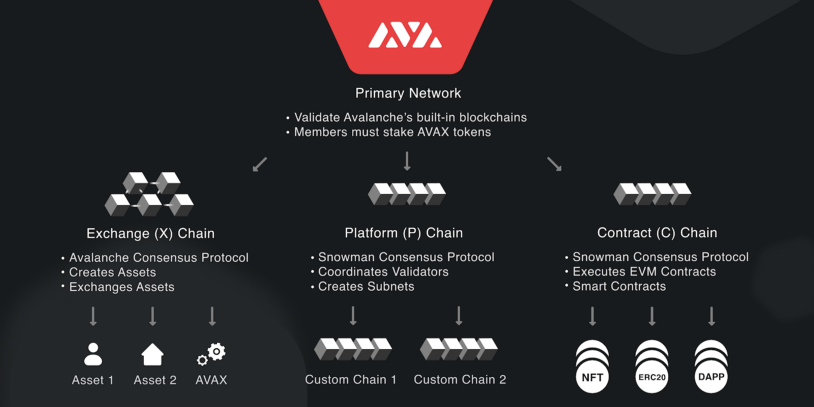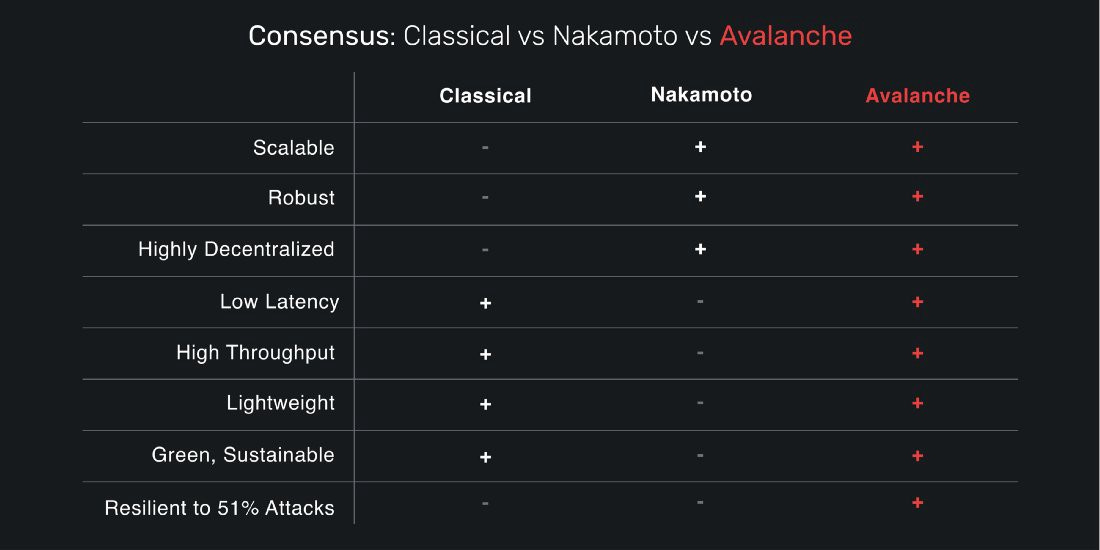Avalanche: Blockchain 3.0
Avalanche's Tokenomics is a Mix of Bitcoin and Proof-of-Stake Consensus
In today’s post, we will discuss:
Ava Labs and the Avalanche Network
The Tokenomics of The Native Token AVAX
In 2020, blockchain company Ava Labs launched Avalanche as a smart contract platform that runs on a Proof-of-Stake consensus. The Avalanche network is unique in that it simultaneously runs 3 sub-chains.
The primary network validates the built-in blockchains, but each sub-chain serves a specific function and has its own protocol.
With the vision of making every asset digital, Founder & CEO Emin Gün Sirer specifically designed Avalanche to be customizable and interoperable.
With a subnet system, developers can build any coin or project they want all while leveraging the capabilities of Avalanche. This is a big piece of the story behind Avalanche’s success and future roadmap.
Building subnets obviously have a lot of advantages. For example, if you are a government or bank and want to use blockchain as a part of your operations, you can simply build a subnet on to Avalanche instead of creating a network from scratch.
Avalanche is also top-tier in speed and scale. Compared to just 13 transactions per second on Ethereum, Avalanche is much faster and can handle up to 4,500 transactions.
Transaction finality (the time it takes for a payment to be confirmed on the blockchain) is also just less than 2 seconds on the Avalanche network. Compare that to 6 minutes on Ethereum or 60 seconds on Polkadot, and its clear that using Avalanche has some clear advantages.
Avalanche has also been successful in leveraging network effects from other projects in order to fuel its own growth.
The C-chain Snowman Consensus Protocol, for example, uses EVM (Ethereum Virtual Machine) implementation for deployment of smart contracts. This means that projects that are already running on ETH can easily transition over to Avalanche and take advantage of lower fees/higher throughput.
In August of 2021, Avalanche launched Avalanche Rush in order to incentivize liquidity mining on the network. The program was launched in collaboration with Curve Protocol and AAVE, and shows Avalanche’s commitment to DeFi. As of writing this, the Total Value Locked (TVL) on the Avalanche network is ~$10.4 billion.
In April of 2022, Terra CEO Do Kwon announced that the Luna Foundation Guard (LFG) had acquired $100 million in AVAX as a reserve to back their stablecoin. The consequence of this is that the native LUNA token within the Terra ecosystem is now partially backed AVAX.
Without a doubt, Avalanche is picking up traction and solidifying its spot in the ecosystem.
The Tokenomics of AVAX
So far, we’ve talked quite a bit about the Avalanche network. Now let’s get into the tokenomics of the native token AVAX itself.
The AVAX token is the backbone that keeps the Avalanche network running. Holders of AVAX can use the token to earn rewards, pay fees, and conduct peer-to-peer transactions. From the very beginning, AVAX was designed to be a great middle ground between Bitcoin and other Proof-of-Stake based tokens.
The supply of AVAX is permanently capped at 720 million tokens. About half of the tokens were released at launch (with vesting periods up to 10 years), with the other half kept as staking rewards that will be released over decades.
Here is a quick breakdown of the AVAX token distribution at launch:
The fee distribution of AVAX is quite unique as well. Unlike other networks where validators are able to capture the entire reward from fees, Avalanche burns the token instead. Minting of new tokens offsets some of the burn to keep the network functioning.
This structure has 4 important consequences on Avalanche, the first 2 regarding price, and the last 2 regarding the overall network:
The AVAX token becomes deflationary over time as activity increases on-chain and the burning of tokens exceeds the amount minted.
In other Proof-of-Stake systems, validators who earn rewards from on-chain activity may immediately sell the coin and put downward pressure on price. This doesn’t happen with AVAX.
The minting process offsets the transaction fee burning, and the system continues to function without grinding to a long term halt due to destruction of coins
Prevents a rich-get-richer scheme in the network as there are no elected leaders that receive rewards. Instead, burning the token makes the payment beneficial for the entire ecosystem
As of today, AVAX has a market capitalization of around $20.6 billion with a token price of ~$80. The story is not all rosy, however. There are still a lot of challenges along the way, especially with concerns around whether Avalanche will be able to incentivize the right partners to build on their ecosystem.
Centralization of supply is another issue that can also signal red flags amongst web3 adopters. At the core, crypto is about decentralization, and VCs owning a massive stake in early rounds is not so appreciated in this industry. Given how early we are, Avalanche still has a lot to prove, and it is definitely a project I would be paying close attention to in the near future.






